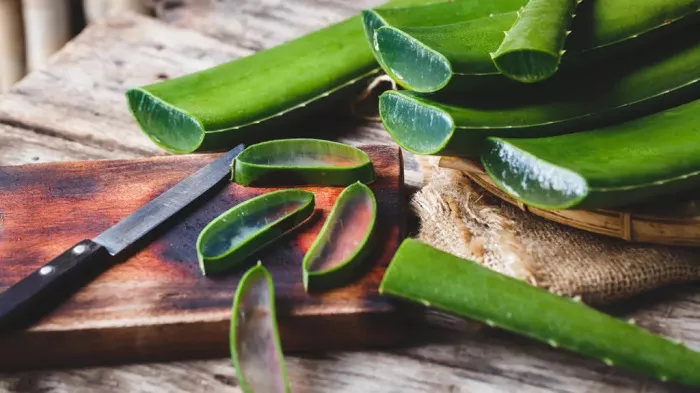Aloe vera, a succulent plant known for its numerous health benefits, has been utilized for centuries in various cultures for its medicinal properties. Among its many uses, aloe vera is highly regarded for its effectiveness in treating skin issues, including acne and pimples. But how long does it take for aloe vera to remove pimples? This comprehensive article will delve into the properties of aloe vera, its effects on the skin, and the timeline for seeing results when used for pimple treatment.
Understanding Aloe Vera
What is Aloe Vera?
Aloe vera is a perennial plant that belongs to the Asphodelaceae family. It has thick, fleshy leaves that contain a gel-like substance rich in vitamins, minerals, enzymes, and amino acids. This gel is widely used in topical treatments due to its soothing, anti-inflammatory, and antibacterial properties.
Historical Uses of Aloe Vera
Historically, aloe vera has been used in traditional medicine across various cultures. The Egyptians referred to it as the “plant of immortality,” and it has been documented in ancient Chinese and Indian medicine for its healing properties. Aloe vera was also used by Greek and Roman physicians, and it continues to be a popular ingredient in modern skincare and health products.
The Science Behind Aloe Vera and Pimples
How Aloe Vera Works on Skin
Aloe vera’s effectiveness in treating skin conditions, including pimples, is attributed to its complex chemical composition. It contains:
Vitamins: A, C, and E, which are antioxidants that protect the skin from damage.
Enzymes: Such as bradykinase, which helps reduce inflammation when applied topically.
Minerals: Including zinc and magnesium, which have anti-inflammatory and antimicrobial properties.
Amino Acids: Essential for tissue repair and growth.
Polysaccharides: Such as acemannan, which hydrate and support skin healing.
Aloe Vera’s Anti-inflammatory Properties
Pimples, a common manifestation of acne, are primarily caused by inflammation of the skin’s sebaceous glands. Aloe vera’s anti-inflammatory properties help reduce the swelling and redness associated with pimples. Bradykinase, one of the enzymes in aloe vera, plays a crucial role in this anti-inflammatory process.
Antibacterial Effects
Aloe vera’s antibacterial properties help combat the bacteria that contribute to acne formation. This is particularly important in preventing the proliferation of Propionibacterium acnes, the bacteria commonly associated with acne.
Healing and Moisturizing Properties
Aloe vera is known for its ability to accelerate the healing process of wounds and reduce scarring. The gel’s moisturizing properties help keep the skin hydrated, preventing it from becoming dry and irritated, which can exacerbate acne.
Application of Aloe Vera for Pimples
Methods of Application
Aloe vera can be applied to the skin in several ways:
Direct Gel Application: Using fresh aloe vera gel extracted from the plant’s leaves.
Commercial Aloe Vera Products: Such as creams, gels, and lotions that contain aloe vera as an active ingredient.
DIY Aloe Vera Masks and Mixtures: Combining aloe vera gel with other natural ingredients like honey, lemon, or tea tree oil for enhanced effects.
Steps for Applying Aloe Vera Gel
Cleanse the Skin: Start by thoroughly cleansing your face with a mild cleanser to remove dirt and excess oil.
Extract the Gel: If using a fresh aloe vera leaf, cut it open and scoop out the gel.
Apply the Gel: Gently apply the gel to the affected areas, ensuring an even coverage.
Leave it On: Allow the gel to absorb into the skin. This can be anywhere from 20 minutes to overnight, depending on your preference.
Rinse (if necessary): If you choose to leave it on overnight, rinse it off in the morning with lukewarm water.
Timeline for Aloe Vera to Remove Pimples
Initial Effects
The initial effects of using aloe vera for pimples can be noticed within a few days. Users often report a reduction in redness and swelling, as well as a soothing effect on irritated skin. The gel’s moisturizing properties can also improve the overall texture of the skin.
Visible Improvement
Visible improvement in pimples can typically be observed within 1 to 2 weeks of consistent use. This includes a reduction in the size and severity of pimples and a decrease in the number of new breakouts. The antibacterial and anti-inflammatory properties of aloe vera help in gradually clearing the skin.
See Also: Is Protein Shake for Breakfast Good?
Long-Term Results
For long-term results, it is essential to use aloe vera regularly over several weeks to months. Consistent application can lead to significant improvements in skin clarity and texture. While aloe vera can effectively reduce pimples, it also plays a role in preventing future breakouts by maintaining skin health and hydration.
Factors Influencing the Effectiveness of Aloe Vera
Skin Type
Individual skin types can influence how quickly and effectively aloe vera works. People with oily or acne-prone skin may notice faster results due to aloe vera’s ability to balance oil production and reduce inflammation. Those with dry or sensitive skin might experience slower progress as their skin adapts to the treatment.
Severity of Acne
The severity of acne also plays a crucial role in determining the timeline for visible results. Mild to moderate acne may respond well to aloe vera within a few weeks, while severe acne might require a more extended period of consistent use and potentially additional treatments.
Consistency of Use
Consistency is key when using aloe vera for pimple treatment. Regular application, ideally twice daily, ensures that the skin continuously benefits from its healing properties. Irregular use can delay the desired results.
Combination with Other Treatments
Combining aloe vera with other acne treatments can enhance its effectiveness. For instance, using aloe vera alongside topical retinoids, benzoyl peroxide, or salicylic acid can provide a comprehensive approach to acne management. However, it is important to consult a dermatologist before combining treatments to avoid potential skin irritation.
Potential Side Effects and Precautions
Allergic Reactions
While aloe vera is generally safe for topical use, some individuals may experience allergic reactions. Symptoms can include redness, itching, or a rash. It is advisable to perform a patch test before applying aloe vera gel to a larger area of the skin.
Interaction with Other Skincare Products
Aloe vera can interact with other skincare products, especially those containing strong active ingredients. It is crucial to introduce aloe vera gradually into your skincare routine and monitor how your skin responds.
Quality of Aloe Vera Products
The effectiveness of aloe vera can also depend on the quality of the product used. Fresh aloe vera gel from the plant is considered the most effective, but commercial products can also be beneficial if they contain a high concentration of pure aloe vera.
Scientific Studies and Evidence
Clinical Studies
Several clinical studies have explored the efficacy of aloe vera in treating acne and skin inflammation. A study published in the Journal of Dermatological Treatment found that aloe vera, when combined with tretinoin, significantly improved acne lesions compared to tretinoin alone.
In-vitro Studies
In-vitro studies have demonstrated aloe vera’s antibacterial activity against Propionibacterium acnes and its potential to inhibit the growth of acne-causing bacteria.
User Testimonials and Reviews
User testimonials and reviews also provide valuable insights into the practical effectiveness of aloe vera for pimples. Many users report noticeable improvements in their skin condition within a few weeks of regular use.
Comparing Aloe Vera with Other Acne Treatments
Aloe Vera vs. Over-the-Counter Treatments
Over-the-counter (OTC) acne treatments, such as benzoyl peroxide and salicylic acid, are commonly used to treat pimples. While these treatments are effective, they can cause dryness and irritation. Aloe vera offers a natural alternative with fewer side effects, making it suitable for sensitive skin.
Aloe Vera vs. Prescription Medications
Prescription medications, including topical retinoids and antibiotics, are often prescribed for moderate to severe acne. Aloe vera can complement these treatments by soothing the skin and reducing inflammation, but it may not be as effective as a standalone treatment for severe acne.
Aloe Vera vs. Natural Remedies
Other natural remedies for pimples include tea tree oil, honey, and green tea extract. Aloe vera is unique in its combination of antibacterial, anti-inflammatory, and moisturizing properties, making it a versatile and effective option for many users.
Conclusion
Aloe vera is a powerful and natural remedy for pimples, offering a combination of antibacterial, anti-inflammatory, and healing properties. The timeline for seeing results can vary based on individual skin types, the severity of acne, and the consistency of use. While initial improvements can be seen within a few days, significant and long-lasting results typically require several weeks to months of regular application.
For optimal results, it is important to use high-quality aloe vera products and consider combining aloe vera with other acne treatments under the guidance of a dermatologist. By understanding the properties of aloe vera and following a consistent skincare routine, individuals can effectively harness its benefits to achieve clearer, healthier skin.
[inline_related_posts title=”You Might Be Interested In” title_align=”left” style=”list” number=”6″ align=”none” ids=”9850,9683,9625″ by=”categories” orderby=”rand” order=”DESC” hide_thumb=”no” thumb_right=”no” views=”no” date=”yes” grid_columns=”2″ post_type=”” tax=””]

































